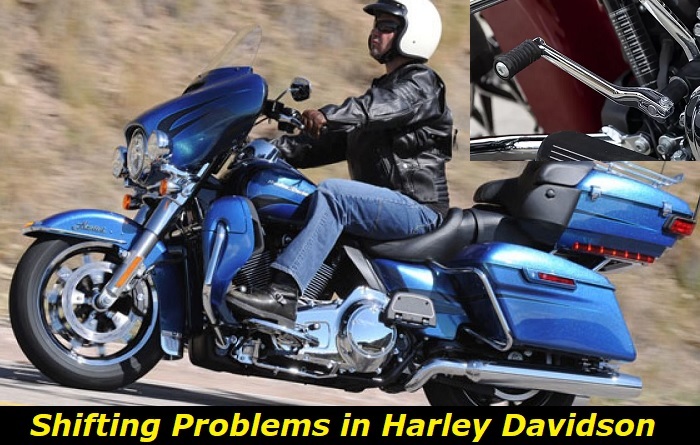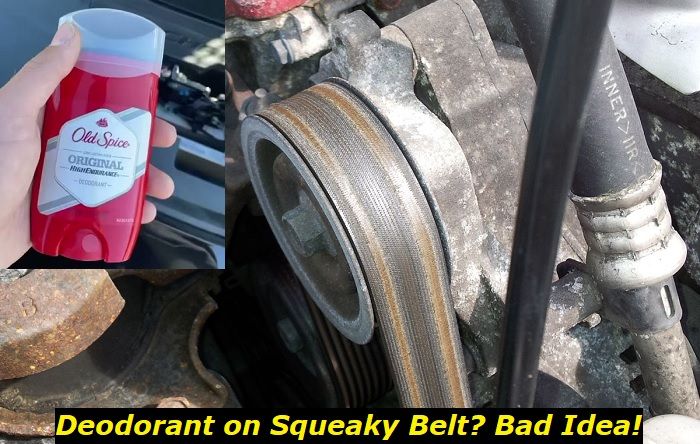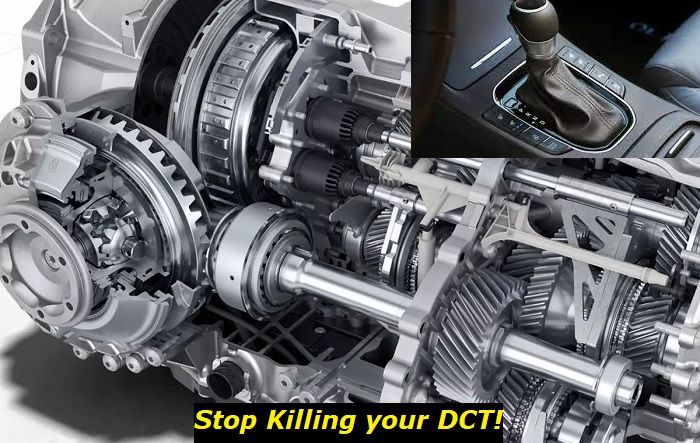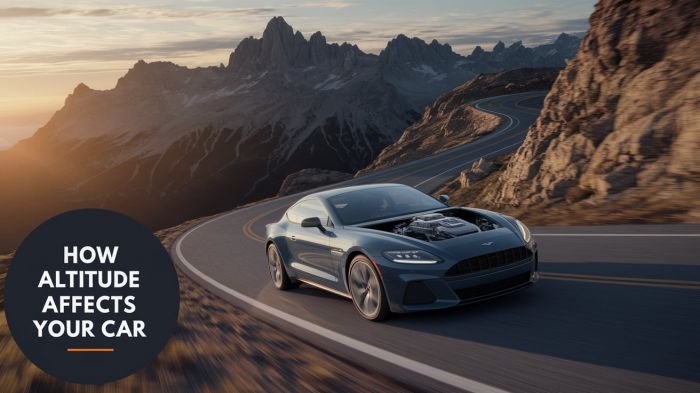Harley Davidson is an iconic and much-loved motorcycle brand that offers excellent engineering and performance. Known for being a powerhouse with a "Bad to the Bone" attitude, the brand has become a cultural symbol. However, motorcycle troubleshooting is something that all owners eventually end up having to face.
When it comes to smooth riding and having full control of your Harley, being able to shift gears at different speeds is essential. Shifting perfectly not only helps with better engine performance, but it is also much safer and more enjoyable for the rider.
So, for all Harley Davidson owners, we will discuss some common reasons, symptoms, and possible solutions behind most shifting problems that you may encounter with your Harley Davidson Motorcycle.

Clutch Related Issues
There are several different reasons why a shifting problem may occur with your Harley Davidson Motorcycle. Most common shifting problems are clutch-related issues and most can be solved with some little re-adjustments. However, as the clutch is responsible for temporarily disconnecting the engine from the transmission and drivetrain system, some issues may require replacements of damaged parts and other serious repairs.
By pulling on the clutch lever, a cable is moved which is connected to the clutch pack assembly underneath the primary cover on your Harley. This removes the clutch diaphragm spring tension and takes away the friction holding the clutch disks together. The engine's torque is transferred to the transmission by this friction inside of the clutch pack.
So once the clutch is disengaged, the torque is removed from the transmission and now the shift lever can be used to select a gear by moving the linkage. Being connected to the shift drum/pawl assembly, the shift forks can engage shift sleeves onto the selected gear.
The transmission's shifting operation consists of these parts/movements and needs to be adjusted correctly while being in good condition for your Harley to shift perfectly.
Clutch Lever and Cable
If you are having shifting problems with your Harley, the clutch lever and cables should be one of the first areas to inspect. To shift or change gears smoothly, the clutch lever must make a complete range of motion from open to fully closed against your handlebar.
Something as simple as an oversized aftermarket hand grip can get in the way of the clutch lever from completing the full range of motion needed to function properly.
Simply getting a smaller diameter hand grip can solve that issue and ensure that the clutch lever closes all the way when squeezed and disengages without any hesitations or issues.
Also, it is common to experience having to put extreme amounts of effort when pulling the clutch lever. That can be a sign that your clutch could be out of adjustment, worn, or need lubrication at the linkage and cable.
Resistance in the cable itself can also prevent the clutch from disengaging fully. In case your Harley grinds when trying to put it in gear, wants to creep forward, or even stall at a stop light, you should check the adjustment at both ends of the cable. The best solution is to lubricate the cable and if there are any pinch points, then the only solution is most likely to get a new cable.
Shift Pawl or Spring
There can be much more serious issues where your Harley can't shift into gears at all. In that case, your transmission may have a damaged or broken shift pawl or return spring. The shifter pawl is attached to the external shift lever. The shift pawl spring keeps the shifter pawl engaged with the shift drum as the return spring puts the shift lever back to its beginning position.
This combination of motions allows the transmission to be ready to shift into the next gear. However, it is common for them to fail to engage the gear mainly due to the spring being broken or worn out. This can prevent your Harley from shifting properly and cause you to be able to upshift but not downshift or vice versa.
Fortunately, you don't need to dig into the transmission for a solution as the most common culprit to this problem is a broken return spring. You can easily replace the spring by removing the top cover and the new parts are usually not that expensive.
It is important to make sure that everything is adjusted just right when replacing the spring as it can be a bit tricky and cause shifting problems even with newly replaced parts due to improper adjustments.
Shifter System
Many riders and mechanics agree that the Harley Davidson shifter system as a whole has been somewhat weak and faulty for many years. Even Harley dealership mechanics admit that the Harley shifter system fails pretty routinely and has been problematic for a while now.
You will experience neutral issues and have difficulties shifting your Harley if there are problems with the alignments or faulty parts in the shifter system.
Shifter Shaft
Connected with a clamp or bolt kind of system, the shifter shaft is up at the Harley toe/heel shifter. There is housing that the shaft goes through and to the primary housing inside where the arm of the front shifter is bolted to the shifter shaft. Both the shifter lever and shifter shaft contain splines.
The shifter linkage attaches to the arm of the front shifter at the top and then goes back to the shift arm in the rear, which then advances to the transmission. Things can go bad from the point the shifter shaft proceeds into the arm of the front shifter. Although the clamp bolt on the arm of the front shifter may be tight, over time, the splines will get stripped/worn out and fail to work properly.
Also, there is a channel in the shifter shaft and as the bolt goes into the arm of the front shifter clamp, everything must be aligned correctly. Over time and usage, the threads get stripped on the bolt and the splines on the shifter shaft get worn out and the arm of the front shifter will get loose and eventually fall off from the shaft. It is better to replace the bolts once you notice any signs of wear on the bolt threads to avoid any problems on the road.
The teeth stripping on the lever that attaches to the shifter shaft and the teeth stripping on the end of the shifter shaft can turn out to be a very serious issue. Depending on how bad the condition of the teeth is, you may not be able to shift gears at all and end up being stranded on the side of the road.
Instead of coming up with improved engineering or better parts, Harley only took off the heel part of the shift linkage to aid in the stripping of the shifter shaft connection.
Shifter Linkage
The shifter linkage can cause problems with shifting up or down to one or more gears from getting rusty or due to binding issues. The linkage is exposed and prone to getting grime and even rusty over time. Fortunately, it is a very easy fix as you can take it apart and clean the collected dirt and rust.
You may experience some binding if the gear shift linkage is set to an incorrect length. In many cases, the shift linkage rod is not installed correctly and can start to bind against the primary cover. Therefore, the toe shifter cannot make a full movement and cause difficulties shifting, especially going from neutral to first and back again.
The linkage is extremely easy to adjust and can be done with just a small spline turn. If you are replacing or reinstalling the shift linkage on your bike, make sure to assemble it back to the exact previous position. Proper placement and adjustment play a crucial role in achieving proper leverage and avoiding shifting issues.
Low Fluid Level
The fluid in the transmission is vital for the overall performance of the transmission, engine, and all other related parts and functions. When the transmission fails to shift and your Harley doesn't move when you try to put it into gear is usually due to a low fluid level. With a low fluid level, the transmission tends to very quickly lock up.
As parts in the transmission lack lubrication, they fail to function properly and even get damaged by excessive friction and heat. One of the main reasons behind the transmission fluid becoming low is because of leakage. Leakage may occur from faulty fluid lines, damaged pan gasket, or from loose and not properly tightened bolts.
Bent/Damaged Shift Fork and Bearings
Experiencing shifting problems once rolling may be caused by a bent shift fork or even bad bearings on the transmission input/output shaft. A bent/damaged shift fork fails to move the gears the proper distance, preventing the complete engagement of the next gear set.
Excessive force on the shift lever can result in bent/damaged shift forks, causing the incomplete gear shift.
Furthermore, a bearing that is worn out or damaged can allow gear to move excessively as well. This will prevent the gear from engaging fully and cause shifting problems. The best solution is to replace the bent shift fork, the bad bearing, and the affected gear set as well to achieve the best results.
Conclusion
Shifting problems with your Harley Davidson Motorcycle can originate from various areas inside and outside of the transmission. Most shifting issues related to the shifter, linkage, clutch, or the primary drive can be fixed/corrected through proper adjustments and alignments.
Whenever you experience any hard time shifting from one gear to another, it is crucial to diagnose and discover the actual cause of the problem.
Inadequate or inappropriate shifting can be both uncomfortable and very dangerous on the road. Maintenance and on-time oil changes play a huge role in keeping your Harley performing at an excellent level while being able to shift gears with ease. It is recommended to always pay attention to the transmission and make sure all parts are well lubricated and are in a good state for better shifting.
About the authors
The CarAraC research team is composed of seasoned auto mechanics and automotive industry professionals, including individuals with advanced degrees and certifications in their field. Our team members boast prestigious credentials, reflecting their extensive knowledge and skills. These qualifications include: IMI: Institute of the Motor Industry, ASE-Certified Master Automobile Technicians; Coventry University, Graduate of MA in Automotive Journalism; Politecnico di Torino, Italy, MS Automotive Engineering; Ss. Cyril and Methodius University in Skopje, Mechanical University in Skopje; TOC Automotive College; DHA Suffa University, Department of Mechanical Engineering






Add comment